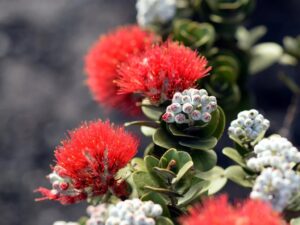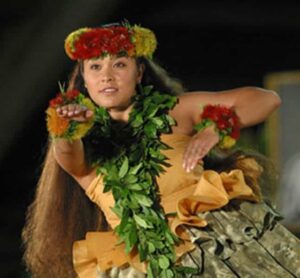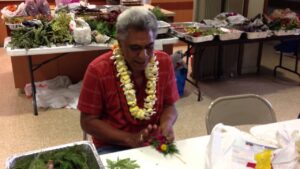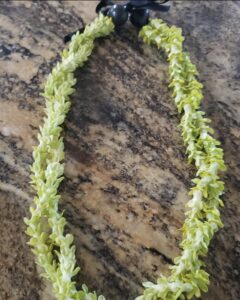“Make a lei, give a lei, wear a lei”
Hauʻoli Lā Mei (Happy May day!)
If you live in Hawaiʻi or have visited during May, you know that May Day is a well-loved event that brings together Hawaiian tradition, community, and beauty. This annual festivity, held on May 1st, embraces Hawaiʻi’s heritage and lei-making tradition. Mahalo to LUVA Realtor Germaine Hopkins who shared with us a lot of information on the significance of leis and the different styles of lei in the Hawaiian culture, which is really what this holiday is all about!
May Day dates back to 1927 when the Hawaiian poet, activist, and educator Don Blanding coined the term “May Day is Lei Day in Hawaiʻi”. He was charmed by the custom of giving and wearing lei, the iconic Hawaiian flower garlands symbolizing love, respect, and aloha spirit. Blanding’s words sparked a movement, and in 1928, Lei Day became an official holiday in Hawaiʻi.
Lei Day embodies the spirit of aloha and celebrates the unique cultural heritage of Hawaiʻi. It’s a day to honor the talented artistry and craftsmanship behind lei-making, which continues to be passed down through generations. A lei is symbolic of unity and can represent a group of people, or anything significant to the person making the lei. The flowers used in the lei can also be symbolic of children, and a representation of family. Leis are also often used to welcome someone or hoʻokipa.
Once the lei is fastened or closed, it is also symbolic of eternity, endless love, or cherished feelings towards the recipient. Because the art of lei making can be a crafted skill, it can be a makana (gift) when given. Making a lei involves spending time gathering the flowers, preparing the flowers, and then artfully piercing the flowers with a lei needle or binding the flowers. It requires time and skill and so just the act of making and giving a lei is a treasured and important makana (gift). Lei-making is a fundamental skill that is often taught to keiki when they are young. It cultivates the mindset of giving from something you have made yourself. This craft requires time, effort, skill, and care and makes each lei a special and one-of-a-kind makana.
Leis are also commonly worn when dancing hula. In our previous blog, we shared about the Merrie Monarch Festival and the hula competition event that takes place in Hilo, Hawaiʻi. At Merrie Monarch, the performing groups wear leis that depict the mele (song/chant) that is being performed. For example, the flower that represents Moku o Keawe (also known as Hawaiʻi island/Big Island) is the lehua blossom. If you are performing a mele about Hawaiʻi island, you will likely see this flower in their leis. Sometimes, the composer of the mele may even reference the flower as a way to compare to the beauty of the person that the mele is written about.

Photo Credit: Google Images

Photo Credit: Google Images
Styles of Lei
There are many styles of making lei and we will mention a few here. The lei that you often hear “haku lei,” is a term that is used for a lei that is worn on the head and often purchased and given at graduation ceremonies, special occasions or even worn by the bride at weddings. The word haku means to “braid” in the context of lei making. The actual term for this style of lei is called a lei poʻo (head lei). It is a style or method of how the binding of the flowers is held together in the lei. The lei poʻo (that some refer to as haku) is usually done in a “wili” or wind method with the use of raffia as a natural form of string or rope. Uncle Bill Char, lei master (who also made the lei for the dancer above) has been teaching lei making to many high schools, like Punahou High School and Kamehameha Schools as he aims to pass on his skill of lei making to the youth. He teaches many different styles of lei, but he is most sought after for his wili style lei. His craft is very difficult as he custom designs his patterns using flower color, texture, size, etc.

Uncle Bill Char (photo credit: Google Images)
The more common lei style is called kui, which is the method of stringing a lei by piercing the flower with a lei needle. In the picture below, we sew a pakalana lei. The pakalana flower grows like a vine crawling up just about anything it can attach itself to like a fence, tree, or plant.

Photo Credit: Germaine Hopkins
Enjoy Mei Day and may you draw inspiration and awe, like we do, from this beautiful cultural practice loved by so many here in the Hawaiian Island. Mahalo again to Germaine Hopkins!